Campervan in Iceland Winter: The Ultimate Guide
Why a Campervan in Iceland Winter Is Worth It
Taking on Iceland during the winter months in a camper might sound bold, but trust us—it’s one of the most rewarding ways to see the country. Sure, there’s winter weather to consider: icy roads, shorter daylight hours, and the occasional sudden weather shift. But the tradeoff is unforgettable—quiet landscapes, fewer tourists, and the magical glow of the northern lights right outside your window.
All our vehicles are manual (not automatic), we don’t offer 4x4s, and you won’t be taking on the Highlands in winter. But here’s the good part: our campers are designed to make cold nights cozy, with insulation, heating options, and the chance to add extras like bedding, Wi-Fi, or a heater. With us, you get brand-new 2024 models or newer, studded tires included, and 24/7 support if you ever need a hand.

Planning Your Winter Road Trip Around Iceland
When you plan an iceland road trip in winter, flexibility is your best friend. Distances may look short on the map, but road conditions can slow you down. That’s why we always suggest:
- Keep your driving days shorter than in summer.
- Use google maps or offline maps to plan, but also check daily weather forecasts and official road and weather conditions.
- Make room in your schedule for road closures or high wind speeds—in Iceland, safety always comes first.
And don’t forget about fuel. Fill up at gas stations whenever you can, especially in remote areas. In winter, knowing your tank is full makes all the difference.
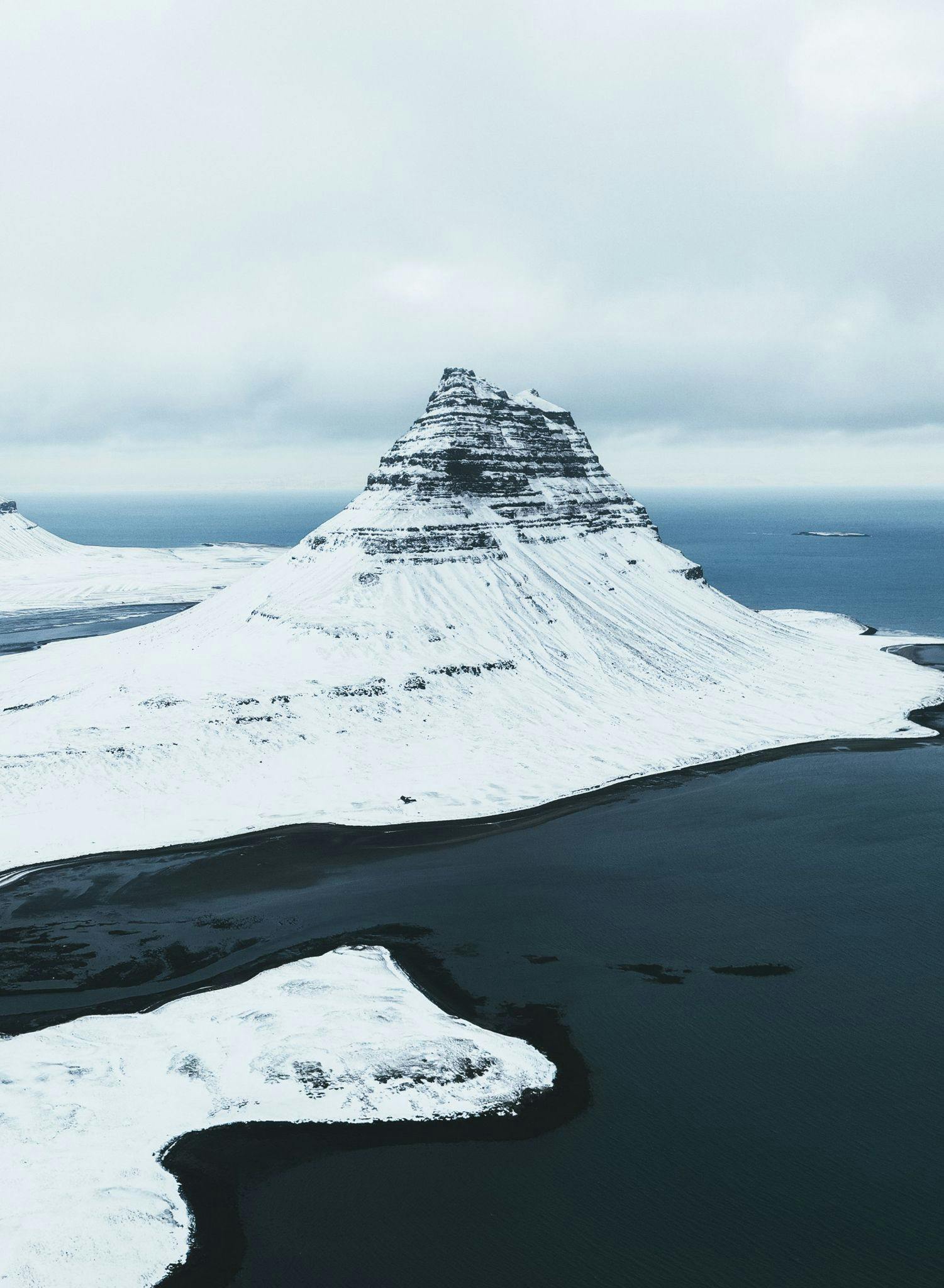
Daylight Hours and Winter Travel Rhythm
In summer, Iceland spoils travelers with nearly 24 hours of daylight. But in winter in Iceland, the story is very different. Around December, you’ll only get about 4–5 daylight hours each day. That means planning your road trip around the light: drive and sightsee while it’s bright, and settle into a campsite before darkness falls.
The upside? Long winter nights mean the best chance of catching the northern lights. Step outside your camper, check the aurora forecast, and you might see the sky explode in greens and purples. That’s something hotels can’t offer—you don’t have to miss the show when you’ve got your bed just a few steps away.
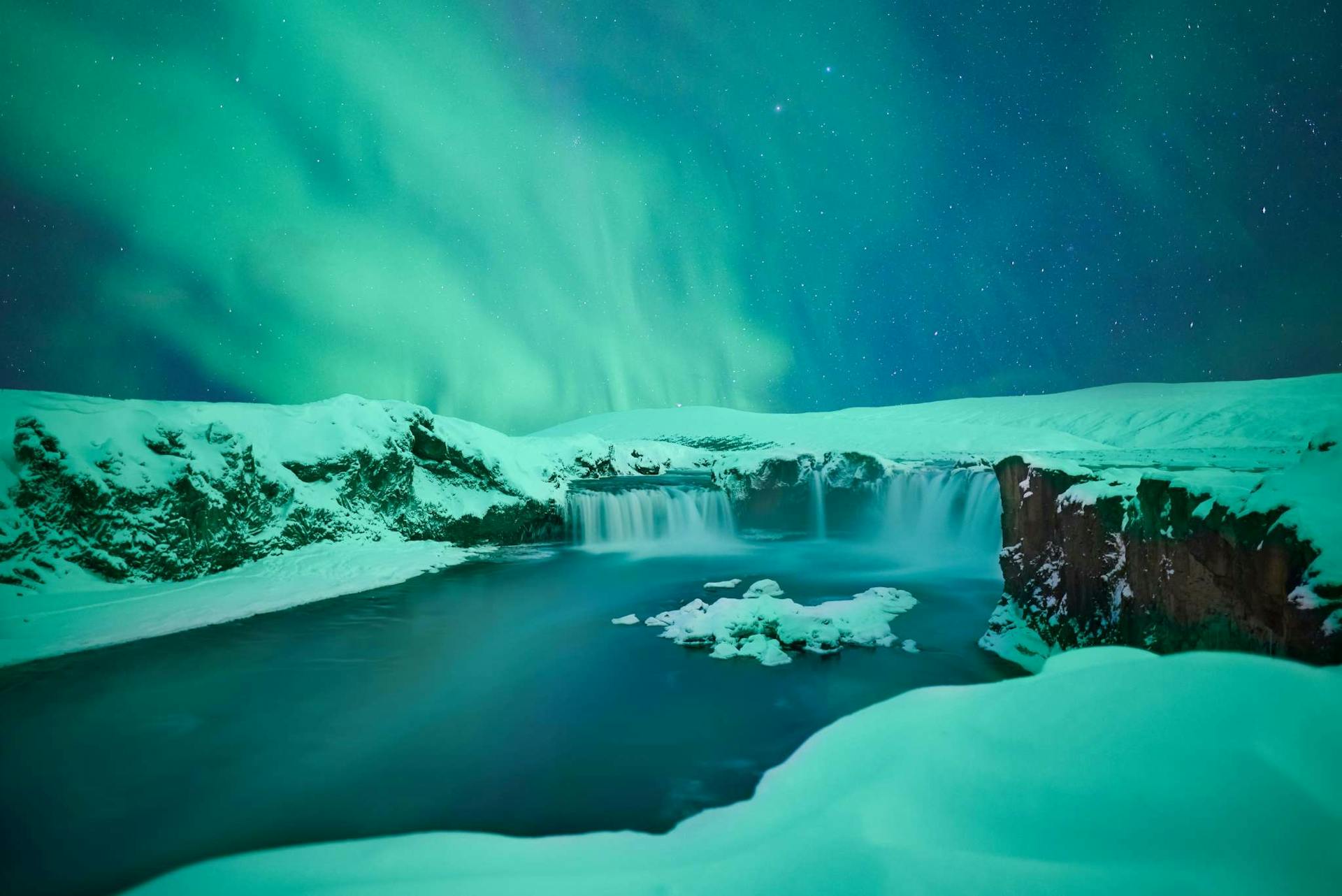
Winter Driving Basics for Camper Travelers
Driving a camper in icelandic winter conditions is different from summer cruising. Here’s what you need to know:
- Studded tires come standard with our campers in winter. They’re essential for gripping icy roads and snowy roads.
- Speed limits are lower for a reason—90 km/h on the ring road in perfect conditions, but you’ll often go slower.
- Always keep both hands firmly on the steering wheel. Strong gusts of wind can push a camper around, and steady control makes a big difference.
- Watch out for black ice and slippery roads, especially near bridges and shaded areas. If you feel a slide, ease off the gas and try to maintain control instead of braking hard.
Remember, our campers are manual cars, which means you get better handling and fuel efficiency than with automatics. Once you get into the rhythm, winter driving can feel surprisingly natural.
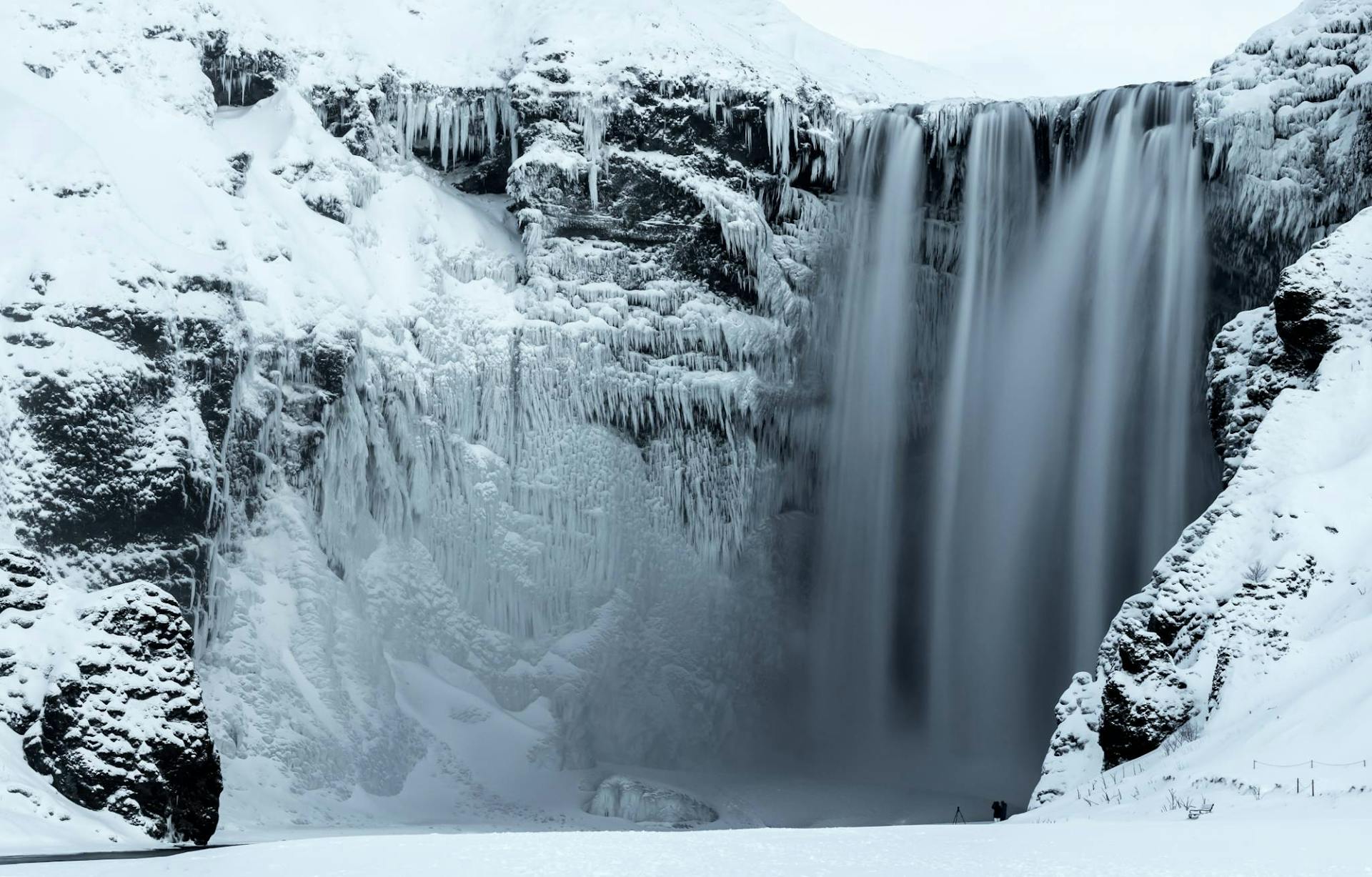
Why Our Campers Make Winter Camping Stress Free
We know winter camping can sound intimidating, but we’ve designed our campers to make it as stress free as possible. Every van comes with a strong electrical system (USB-C and USB plugs for your devices), reliable heating, and the option to add extras like sleeping bags, portable heaters, or even Wi-Fi routers.
It’s not just about safety—it’s about comfort. Imagine returning from a short walk to a frozen waterfall, kicking off your boots, and warming up inside your own little rolling cabin. That’s what makes winter camping in Iceland so special—you’re not just visiting, you’re living it.
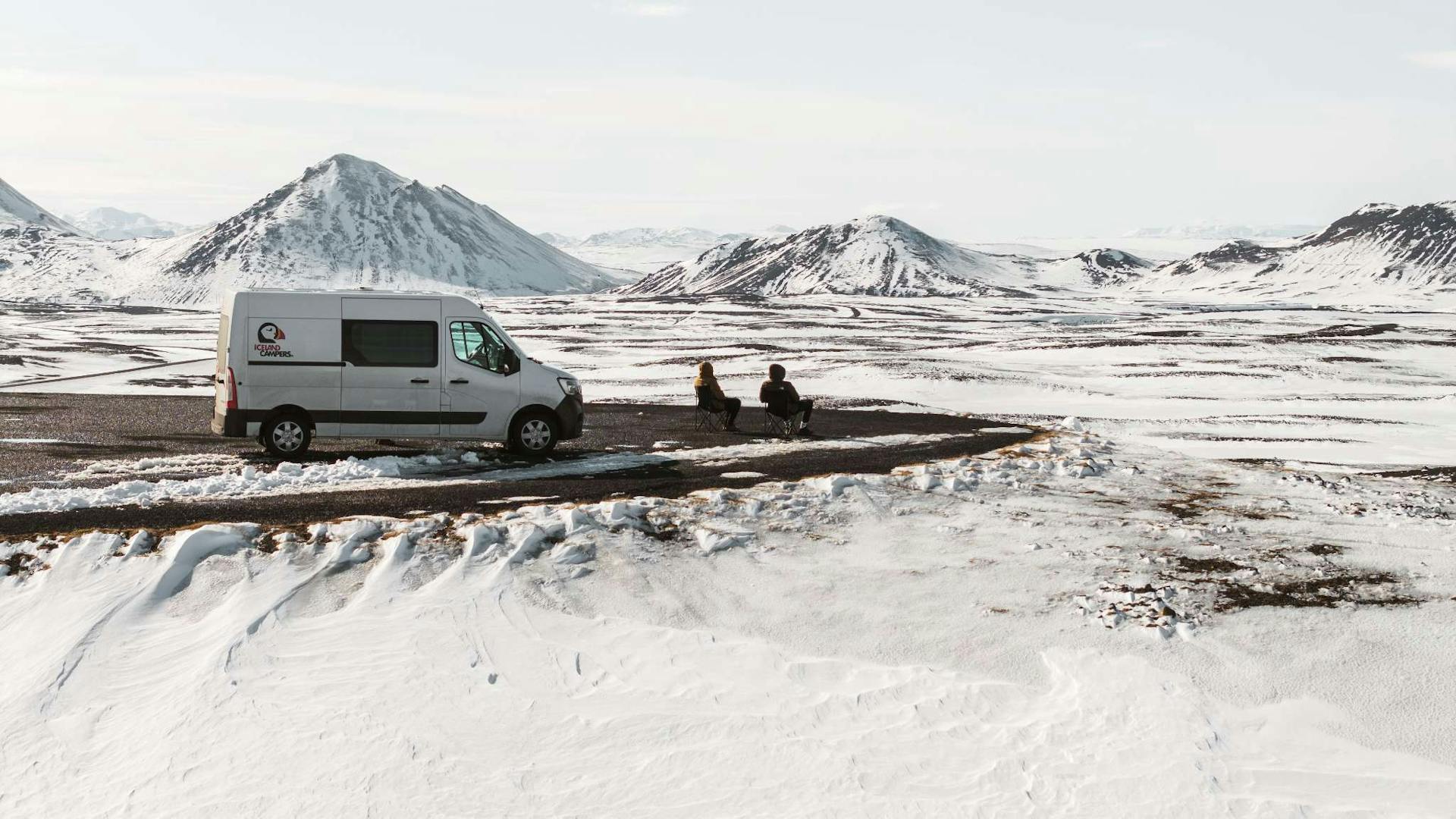
Driving the Golden Circle in Winter
The Golden Circle is one of Iceland’s most famous routes, and it’s just as impressive in the winter months. From Þingvellir National Park to Gullfoss waterfall and the Geysir geothermal area, each stop looks like something out of a winter fairytale.
With a camper, you get to enjoy the sights at your own pace. But keep in mind: slippery roads and black ice are common in this area during cold weather. Drive slower, watch for weather warnings, and always check road and weather conditions before heading out.
The payoff? Snow-dusted geysers, half-frozen waterfalls, and sometimes even the northern lights above. Experiences like this are why we believe camper travel makes all the difference in winter.
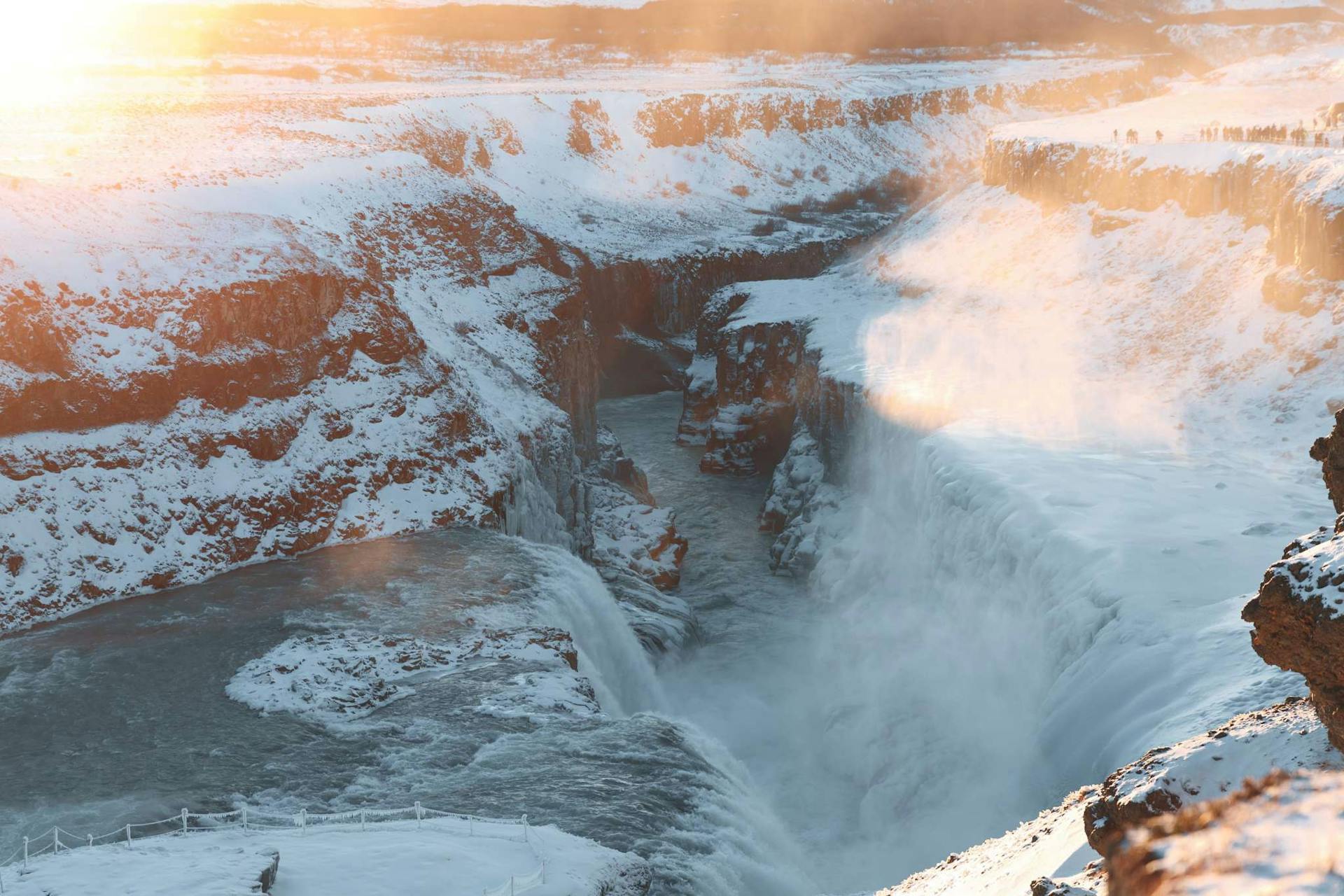
Ice Cave Tours in Winter Months
One of the ultimate winter activities in Iceland is visiting an ice cave. These natural wonders can only be accessed safely during the winter time, when the ice is solid and stable. Most tours leave from areas near Vatnajökull National Park, and you’ll need a guide to take you inside.
The blue ice walls and frozen tunnels are breathtaking, and parking your camper nearby means you can warm up immediately afterward. Many happy campers say the combination of a cave adventure and cozy camper night is their favorite memory of traveling Iceland.
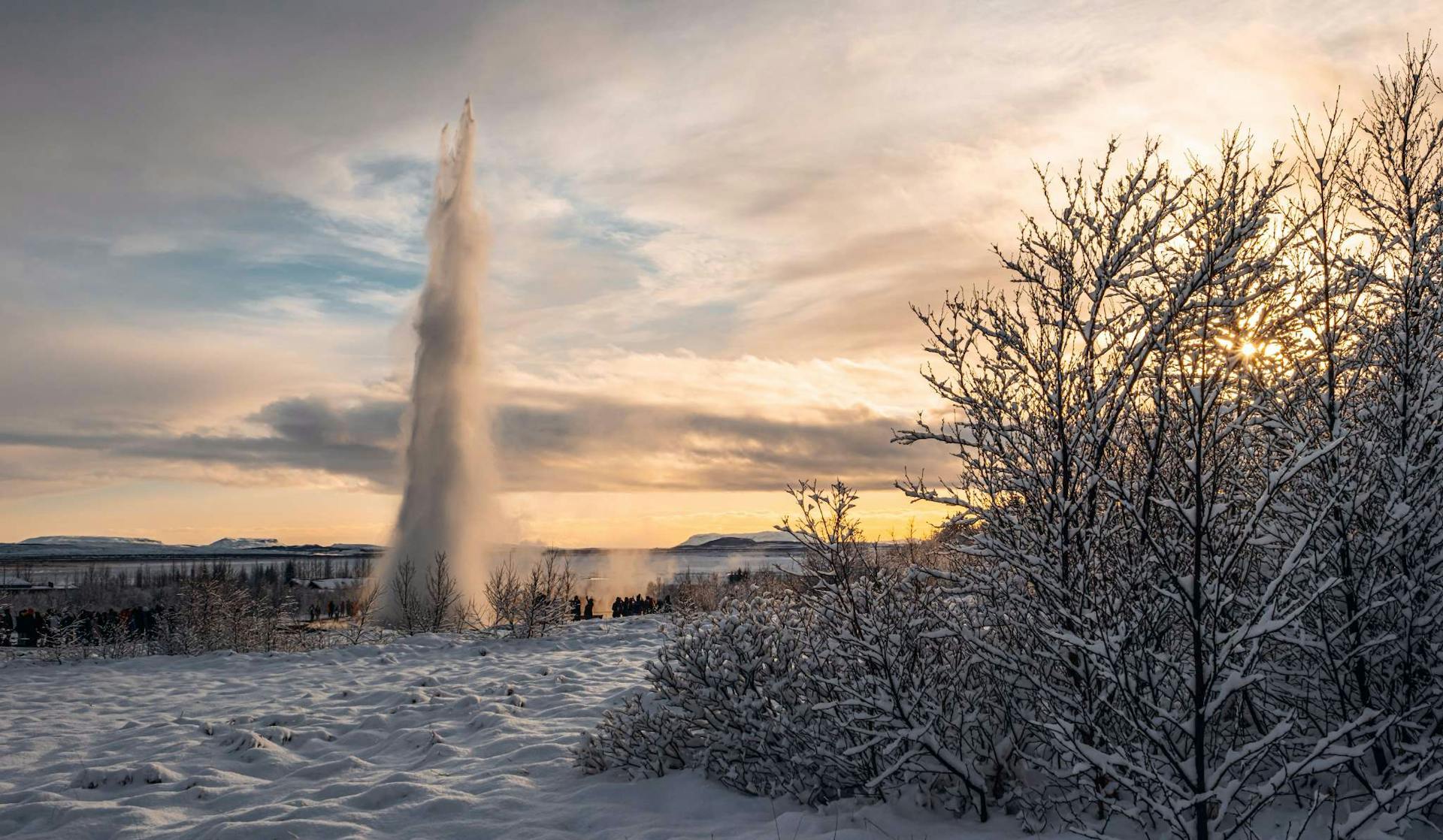
Hot Springs and Natural Relaxation
After hours on snowy roads, nothing beats slipping into one of Iceland’s hot springs. From the famous Blue Lagoon to smaller pools scattered across the countryside, these geothermal baths are the perfect way to recover from a day of winter driving.
The beauty of traveling by camper is that you can stop at natural hot springs, dry off, and return to a heated van within minutes. Don’t forget your flip flops and a bag for wet clothes—they’ll make the experience smoother. Some travelers even say these small comforts make a big difference in winter.
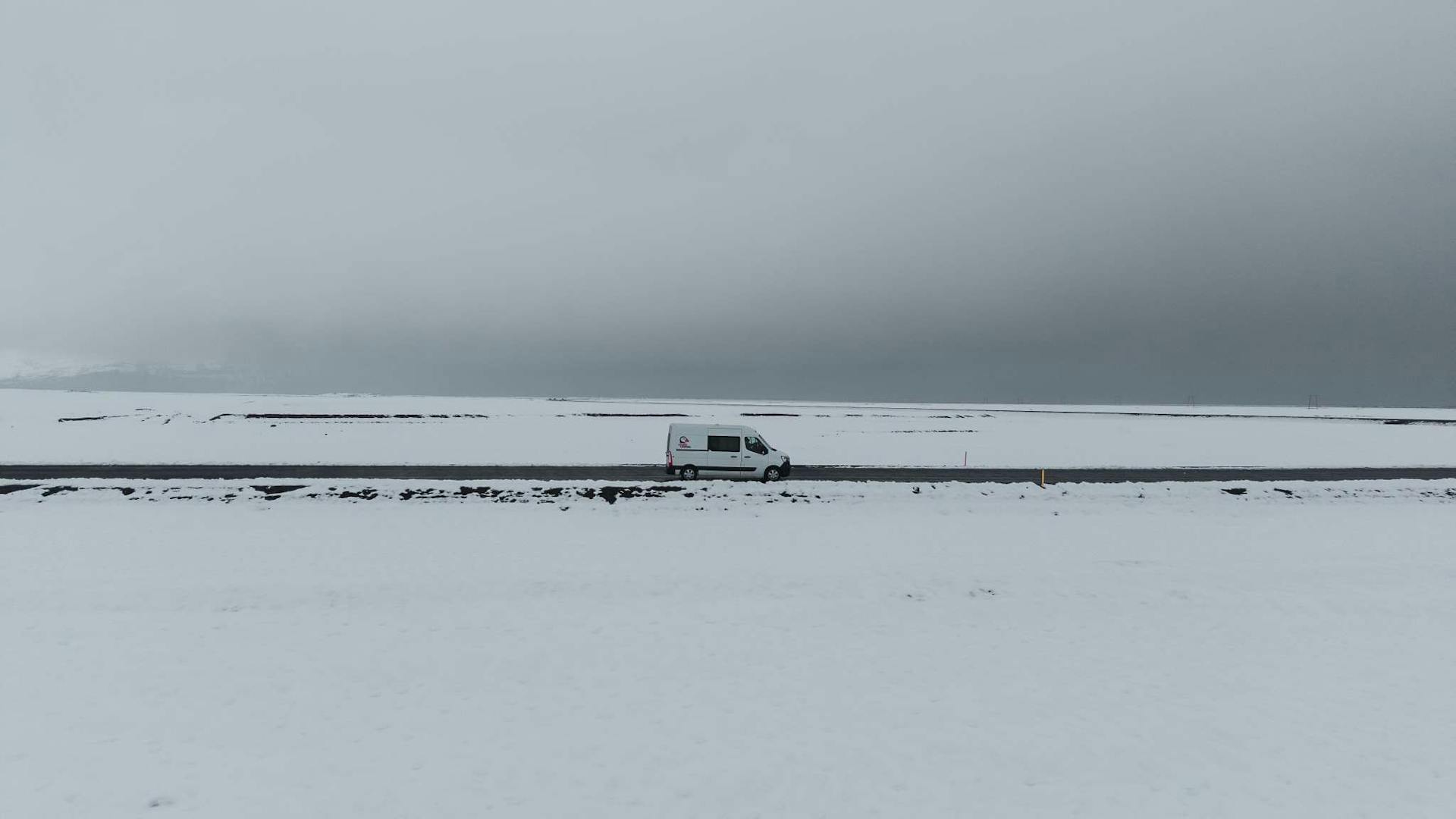
Black Ice and How to Handle It
Black ice is one of the biggest hazards during icelandic winter travel. It’s almost invisible but incredibly slippery. You’ll often find it on mountain roads, bridges, or shaded corners of the ring road.
Here’s how we recommend staying safe:
- Keep both hands on the steering wheel at all times.
- Respect the speed limits, even when roads look clear.
- If you hit ice, avoid braking suddenly—ease off the accelerator and steer gently to maintain control.
These simple steps can be the difference between a safe trip and an accident. Remember: winter driving is all about patience.
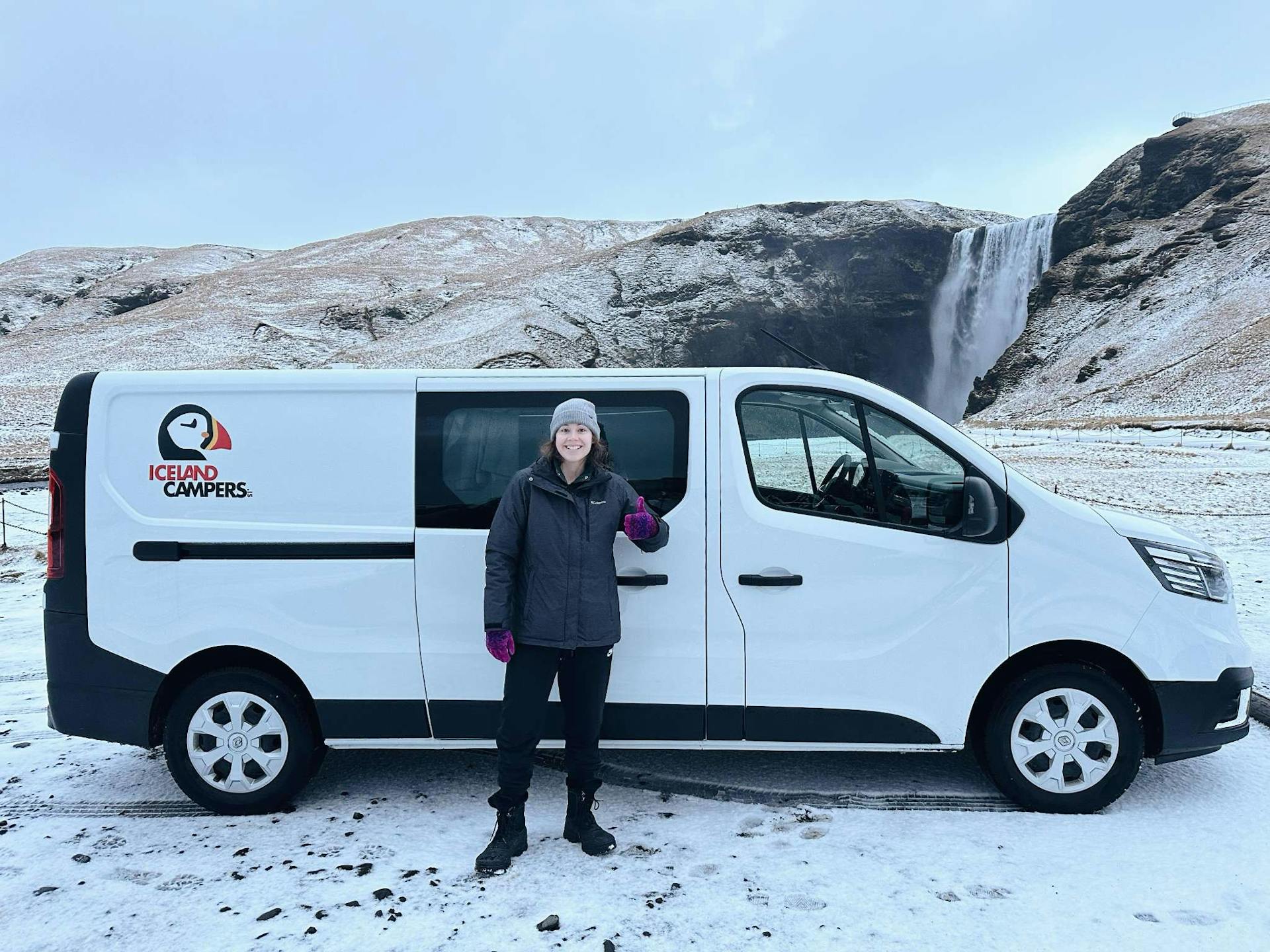
Why F Roads Are Off Limits
We get this question a lot: can campers go on F roads in winter? The answer is no. All F roads are closed during the winter months, and they’re off-limits even in summer with a standard camper. These routes require 4×4 vehicles, and we don’t rent those.
The good news is that you don’t need F roads to see Iceland’s best sights. The ring road and other well maintained routes will take you to glaciers, geysers, waterfalls, and even base camps for ice cave tours. Stick to those, and you’ll have a safer and much more enjoyable experience.
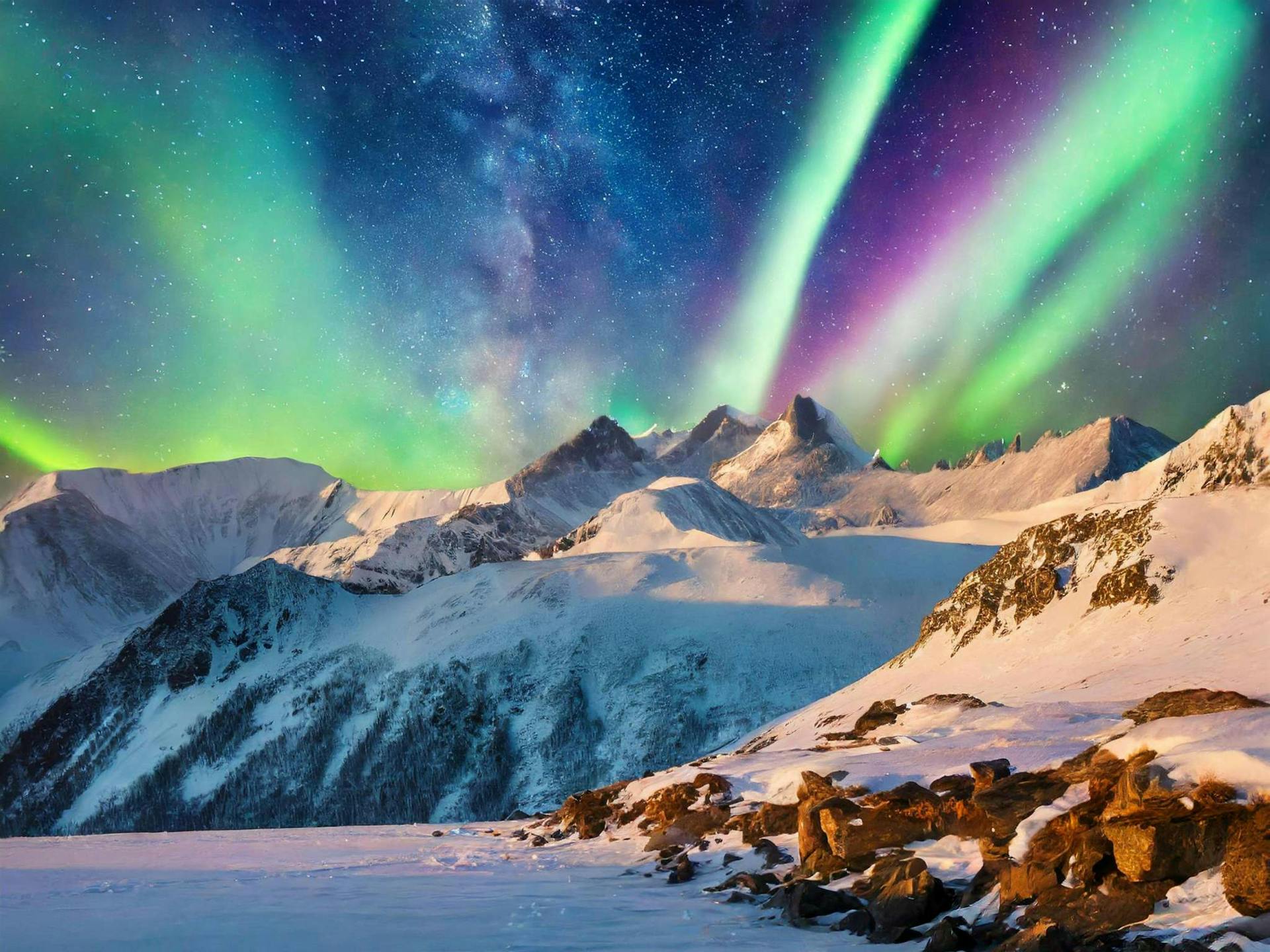
Winter Camping Basics
Camping in Iceland in winter means planning smarter. Many campsites remain open year-round, especially near Reykjavík, Akureyri, and along the ring road. Facilities vary—not all campsites have heated kitchens or indoor lounges—but you’ll almost always find electricity, bathrooms, and sometimes even a hot shower.
To make it stress free, we suggest:
- Packing winter gear like insulated jackets, hats, and gloves.
- Bringing extra sleeping bags or renting them from us.
- Keeping power banks and chargers topped up at gas stations or campsites.
- Preparing for sudden weather changes with flexible travel plans.
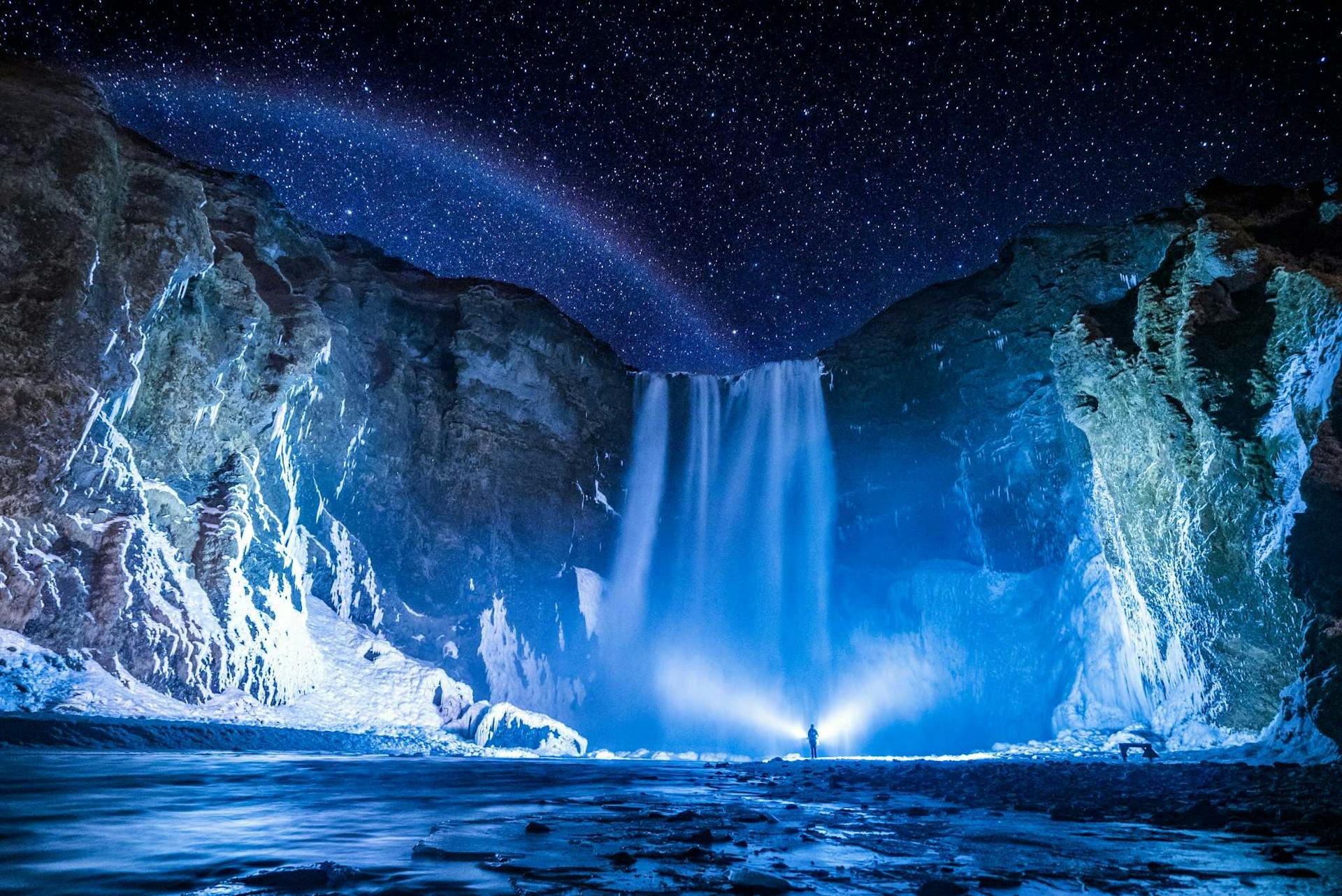
Why Our Campers Make All the Difference
Winter travel doesn’t need to be uncomfortable. Our vans come equipped with:
- Studded tires for better grip on icy roads.
- Reliable heating systems.
- USB-C and USB charging for your devices.
- Optional extras like Wi-Fi, bedding, or even a portable heater.
With these, you’ll be ready for whatever icelandic roads throw at you. Many travelers tell us that these features made all the difference in turning a potentially tough trip into a stress free adventure.
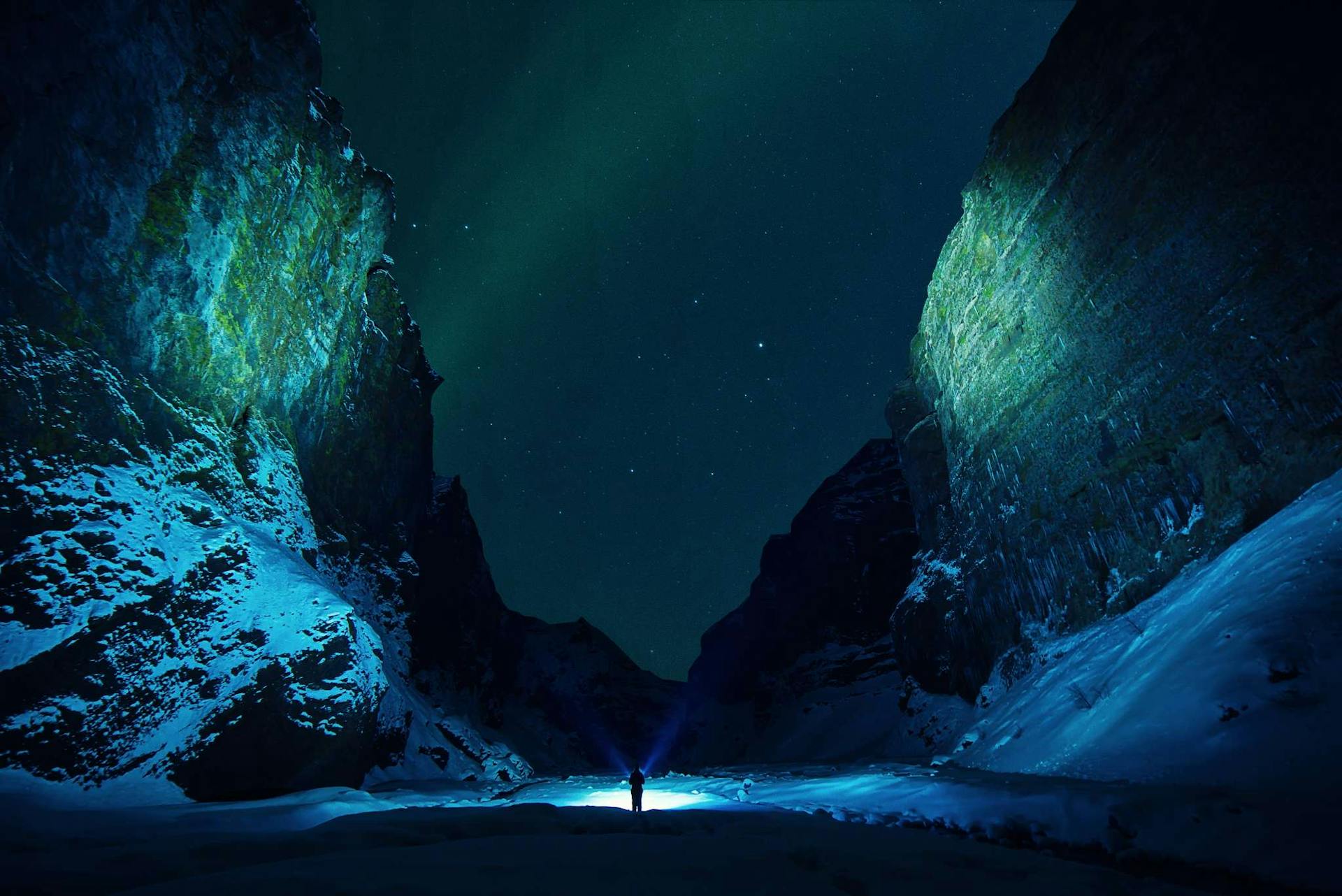
Aurora Forecast and Winter Nights
One of the biggest reasons to try iceland in winter with a camper is the chance to see the northern lights. Unlike summer, when the nights are too bright, the long winter nights are perfect for aurora hunting.
We always recommend checking the aurora forecast before heading out. Combine that with clear skies and low light pollution, and you’ve got a good shot at seeing the show. The best part? With your camper, you don’t have to wait inside a hotel—you can step outside, watch the lights, and then crawl straight into bed.
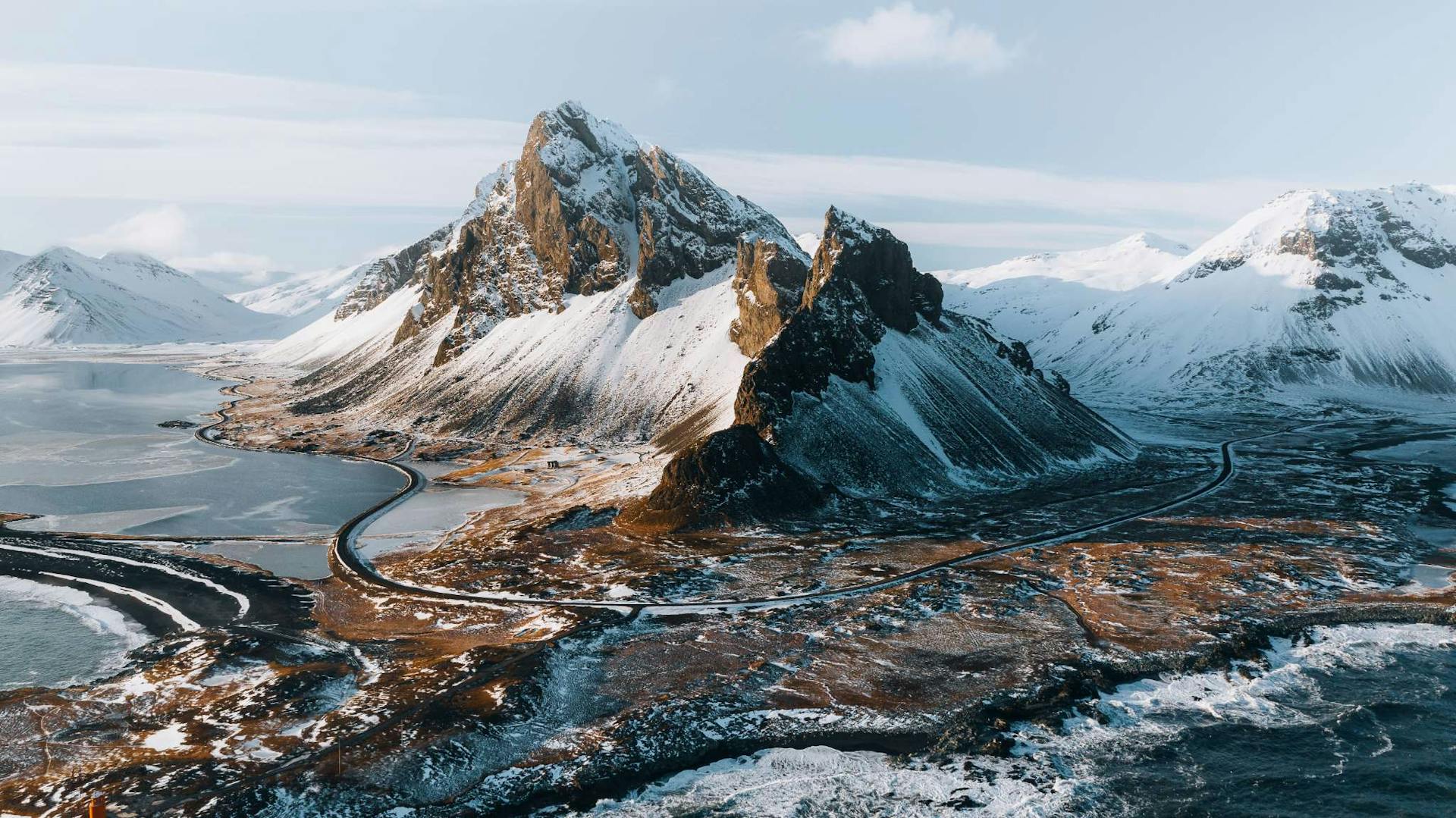
Off Season Travel Advantages
The off season in Iceland runs through the winter months, and it’s one of the best-kept secrets. You’ll encounter fewer tourists, quieter campsites, and a more relaxed pace overall. Places like the Golden Circle or popular hot springs feel more personal without big crowds.
On top of that, rental companies and attractions often offer better rates compared to peak season. For many happy campers, that makes all the difference between a rushed holiday and a stress free adventure.
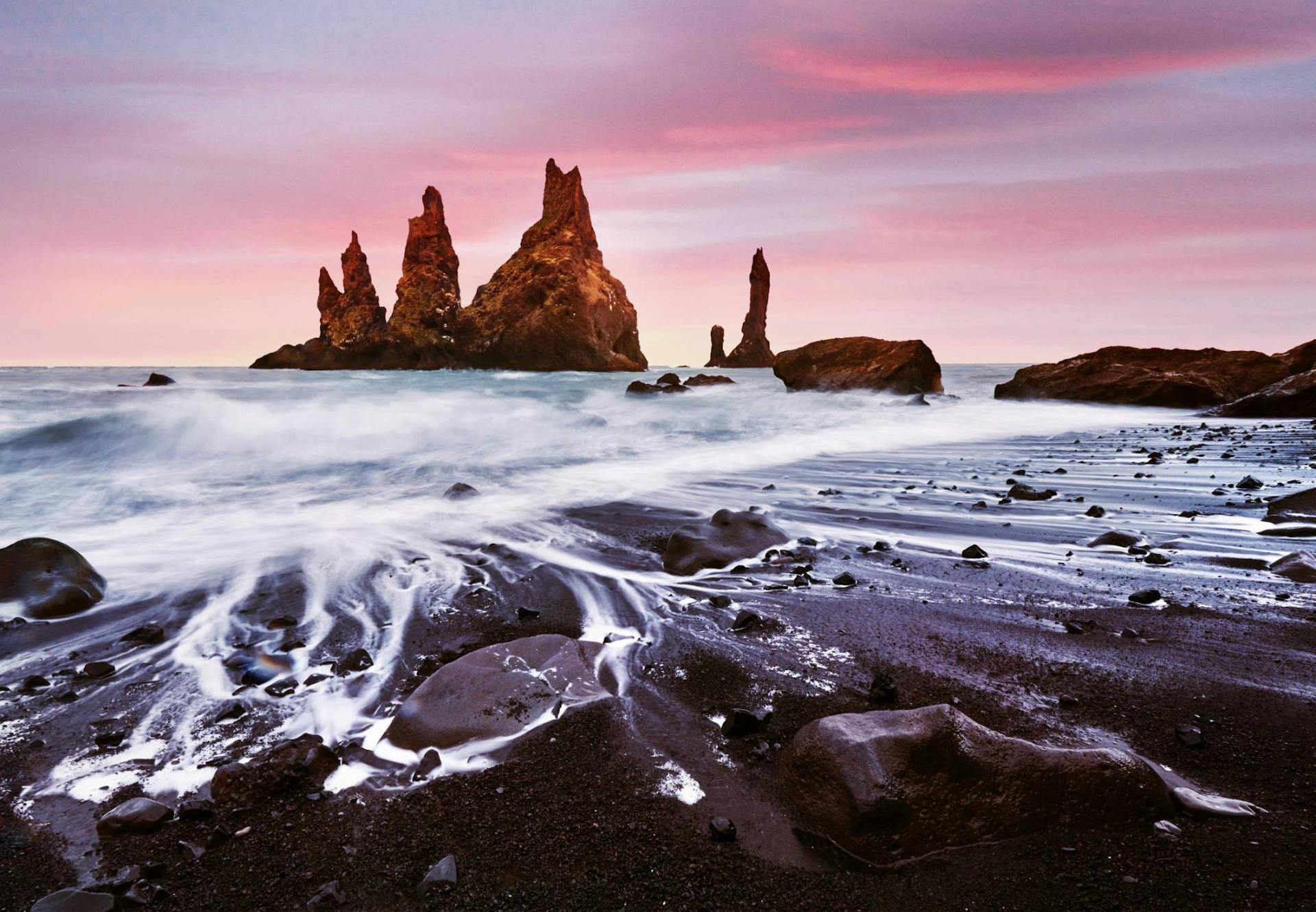
Weather Forecasts and Road Closures
In the icelandic winter, conditions can change fast. Always check weather forecasts before leaving your next campsite and stay updated on road closures. Official sites post alerts when orange or red warnings are active, usually because of high wind speeds, heavy snow, or reduce visibility.
If you see a warning, don’t take unnecessary risks. Stay safe at a campsite, enjoy some downtime, and wait it out. With a camper, you’ve got everything you need right with you, which makes those pauses far more comfortable.
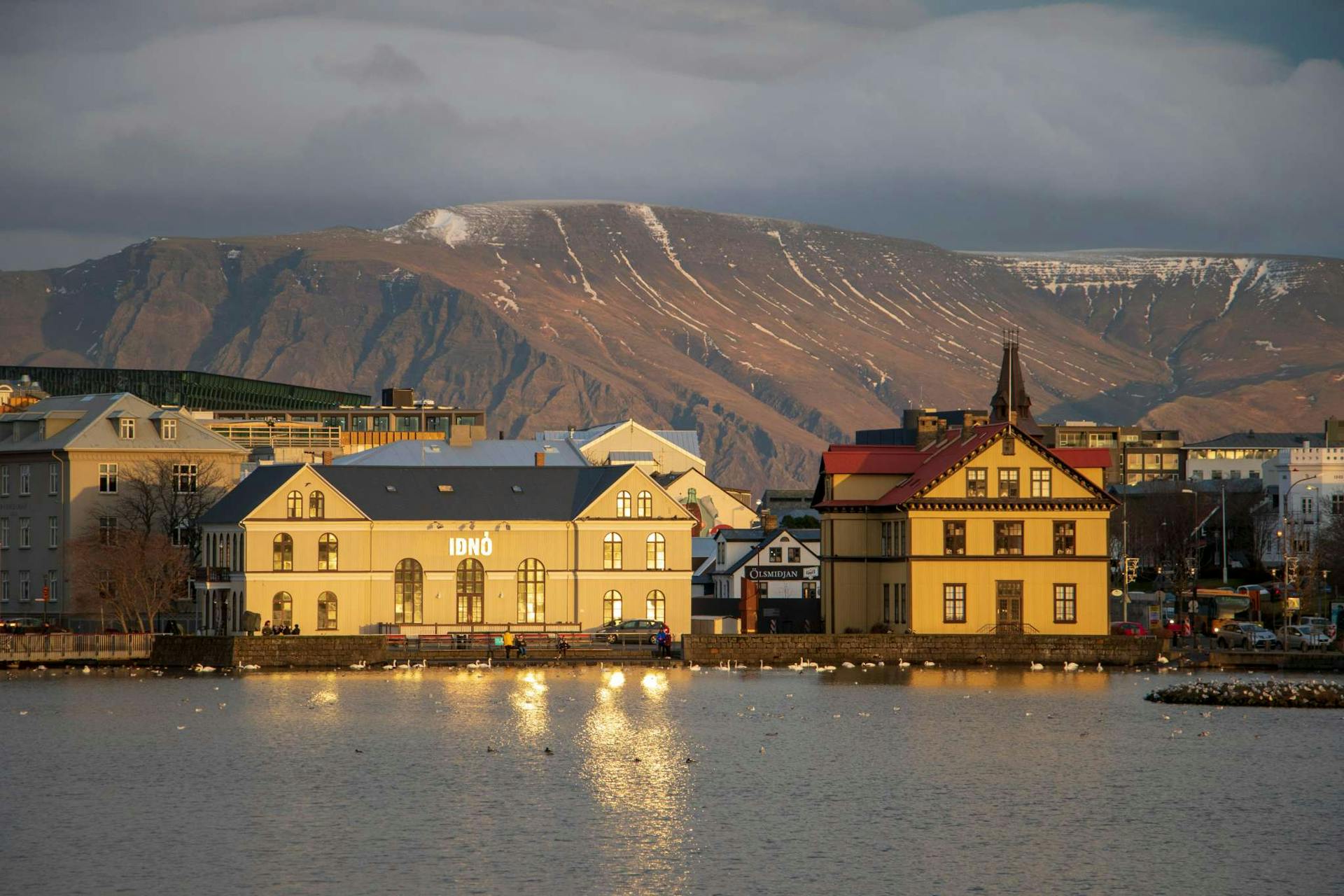
Google Maps, GPS Location, and Offline Maps
Good navigation is essential for winter travel. While google maps works well in towns and near gas stations, coverage can drop in remote areas. That’s why downloading offline maps and marking your gps location is smart.
It’s also super helpful to let someone know your travel plans when venturing further out. That way, if sudden weather or bad weather causes delays, you’re covered. Small steps like this make a big difference in safety and peace of mind.
Your Winter Camper Adventure Awaits
Winter in Iceland isn’t just about snow—it’s about freedom. Picture yourself driving through snowy valleys, soaking in hot springs, or watching the northern lights from your camper door. Sure, there will be challenges—strong winds, black ice, or sudden weather—but those moments are part of the story.
With us, you’re never on your own. All our vehicles are manual cars built for these conditions, fitted with studded tires, and ready for safe winter driving. You can add extras like heaters, Wi-Fi, or bedding to make your journey even more comfortable. Plus, our airport pickup and drop-off service and 24/7 support mean your trip starts and ends stress free.
Traveling with a camper in Iceland during the winter months is more than a holiday—it’s a chance to live differently, to embrace the rhythm of van life, and to truly connect with the raw beauty of the island. Whether it’s your first night parked under a sky full of stars or your last stop at a steaming hot spring, this is the kind of trip that stays with you forever.
So pack your winter gear, plan with care, and let us provide the wheels and warmth. Together, we’ll turn your journey through Iceland’s winter into a wonderful trip full of memories, freedom, and adventure.
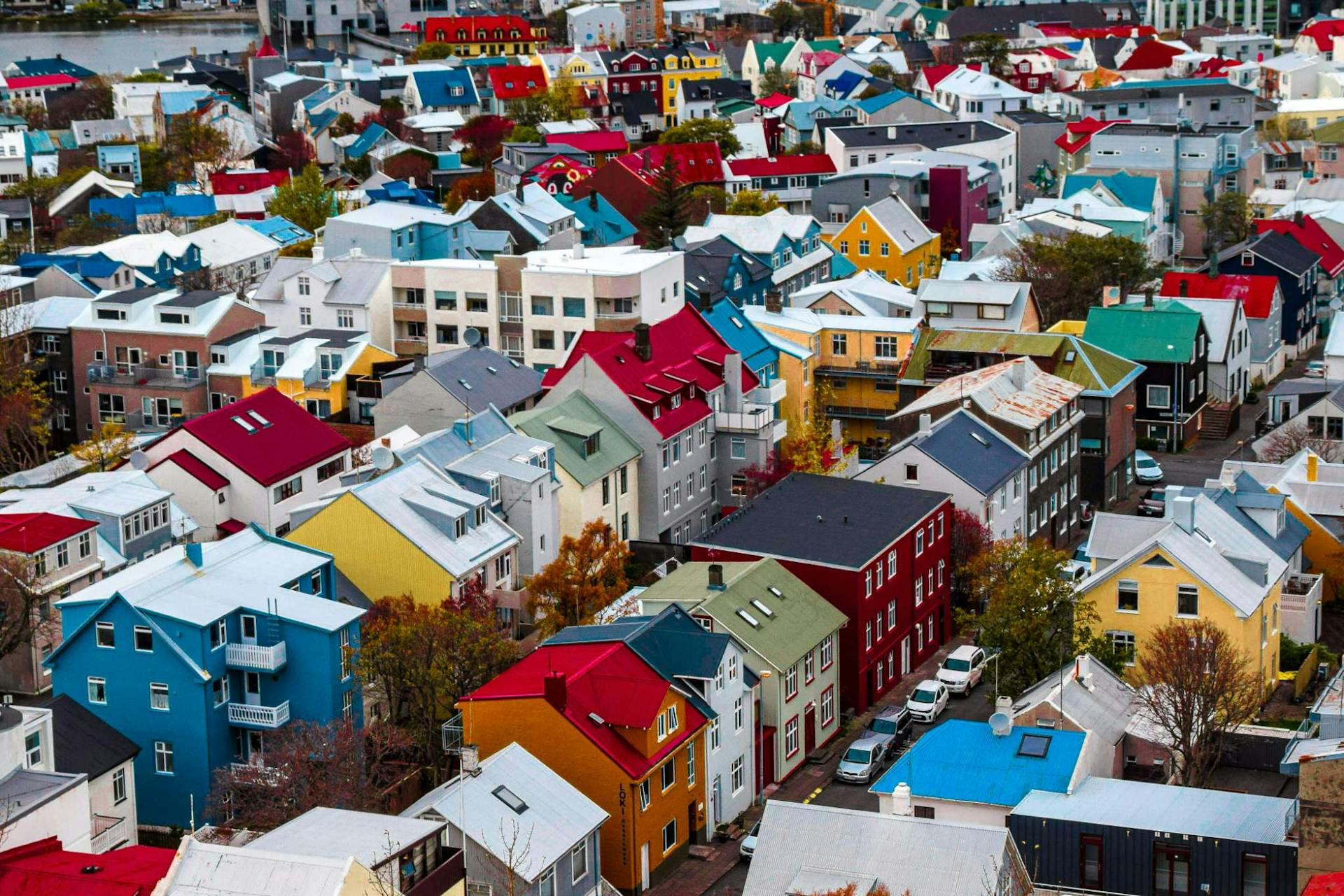
FAQs About Campervans in Winter
Can You Campervan in Iceland in Winter?
Yes, and many of our travelers say it was the highlight of their lives. With studded tires, proper winter gear, and extras like sleeping bags, winter camping becomes not just possible but incredibly rewarding.
Can You Sleep Anywhere in a Campervan in Iceland?
No—you can’t just pull into a car park or random parking area. Camping in Iceland is only allowed at designated campsites or with landowner permission. Luckily, there are well maintained sites all around the ring road, even in the off season.
Is It Difficult to Drive in Iceland in Winter?
Driving in winter in iceland requires more caution than in summer. You’ll face icy roads, snowy roads, and sometimes strong winds. But with the right approach—steady hands on the steering wheel, respect for speed limits, and adjusting to road conditions—you’ll be fine. Think of it as part of the adventure.
Can Campervans Go on F Roads in Iceland?
No. In winter months, all F roads are closed. Even in summer, campers can’t use them because they require 4×4. Stick to the main routes like the ring road and you’ll still reach glaciers, geysers, waterfalls, and even ice caves.